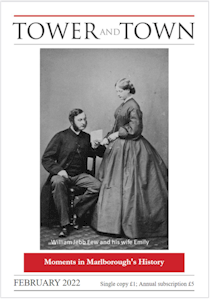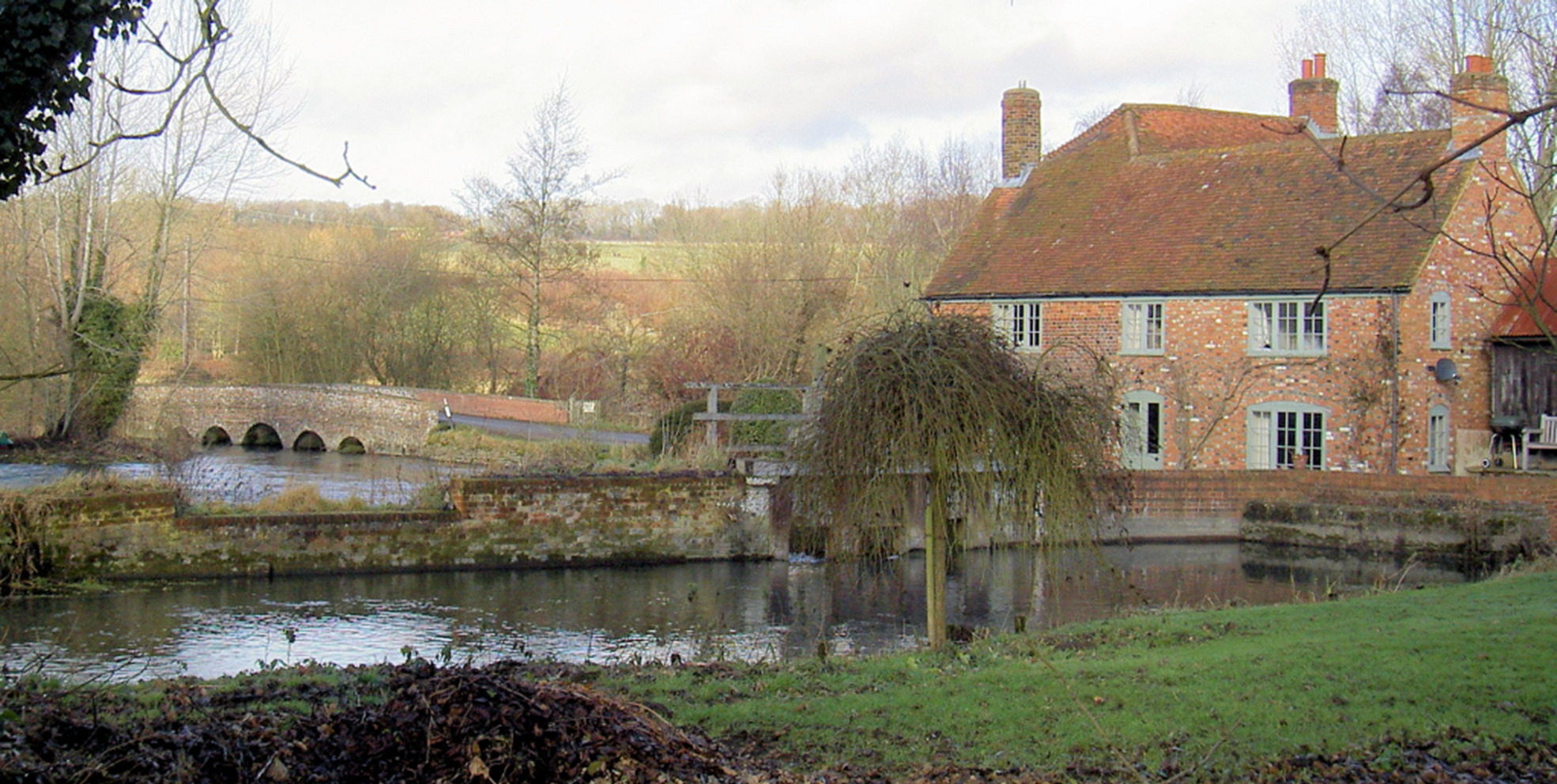

Tower and Town, February 2022 (view the full edition) (view the full edition)Water Mills On The River KennetAccording to the Domesday Book (1086) there were 5,624 Water Mills in England among an estimated population of 1.4 million so about one mill for every fifty households (households being estimated at an average of five persons). At Domesday almost all of these mills would have been flour mills. There were eight mills in four miles along the River Kennet from Clatford in the west to Stitchcombe in the east. Private households were banned from owning mill stones (querns) and being able to grind their own grain. They were compelled to pay a tithe of flour to have their grain milled in the mill owned by the local lord or church. In the next few hundred years after Domesday, many mills were converted to more profitable industrial processes such as fulling, metal working and tanneries.  Stitchcombe today Marlborough followed this trend: one of its eight mills, Elcot, was a fulling mill by 1215. Fulling is an archaic process applied to woven woollen cloth and involves stamping and shrinking the newly woven material. This work used to be done by slaves treading in vats of human urine. This unpleasant process was increasingly mechanised by using water power and a benefit of this advance was that slavery had largely died out in England by 1200. Other mills inside the present town boundaries were Manton Mill, Castle Mill (in Treacle Bolly) and Town Mill (by the modern development of that name). Outside the town boundaries were Clatford to the west and Werg, Durnford and Stitchcombe to the east. Town Mill was a working flour mill until 1922. The building then became a Youth Hostel (of the most spartan kind) until the building was demolished in 1985 when new housing was built. The old Town Mill water wheel is still in possession of the Town Council and one hopes it can be put on display one day. Castle Mill was flourishing in 1204 and was later given to St Margaret’s Priory. This mill was demolished in 1880. Millers liked to hold back water above their mill to guarantee being able to grind their customers’ grain. This caused endless disputes between neighbouring millers who often caused flooding above their mill. This happened with Town Mill in particular when the miller caused fields above his mill to flood. This led to ‘culver stones’ being placed in the river above a mill: there was one by Isbury Lane (near the Figgins Lane footbridge). Culver Stones were set in the river bed and when the water rose above the stone the miller was required to release water. This stone has given its name to Culvermead Close off George Lane. The holding back of water by millers in the Middle Ages has echoes in our modern world: Ethiopia is building a dam on the Nile and Turkey on the Tigris to the annoyance of Egypt and Iraq. David Chandler |